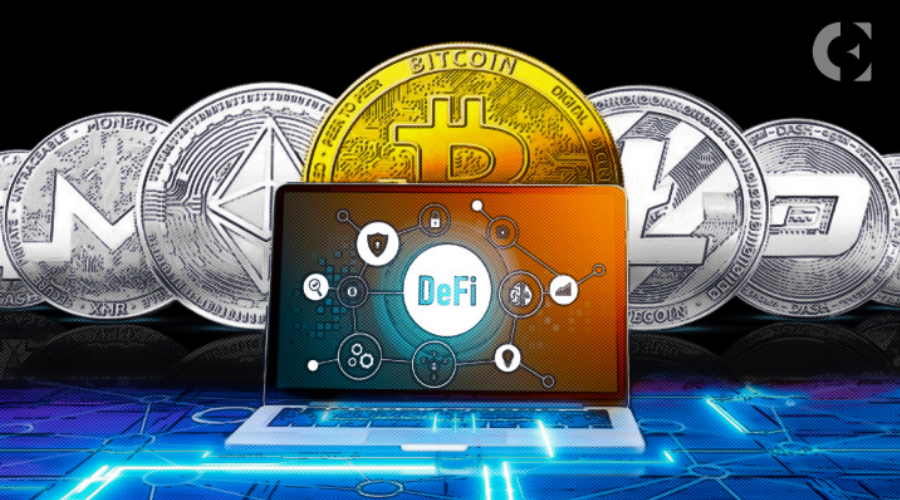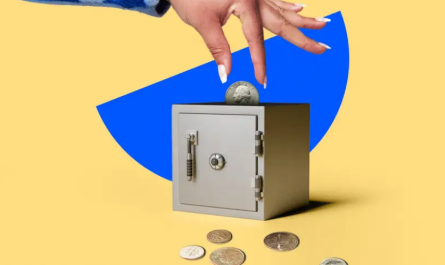If you’re into cryptocurrency, whether you’re an old hand or just got your wallet set up, you’ve probably heard the term “decentralized finance” thrown around while reading about blockchain technology or new coins. Decentralized finance, or simply DeFi, is a system that supports the bitcoin movement. The element’s potential extends well beyond its role as a core element in that domain. For a beginner-friendly walkthrough, check Ethereum’s official DeFi guide.
The fact that DeFi can handle some financial transactions directly, cutting out middlemen like banks, is another selling point. Because of this, more people may be able to afford specific financial products, but DeFi transactions may be riskier. If you’re interested in decentralization but want to know more about the fundamentals before becoming engaged, this is a good place to start. Dive deeper with our DeFi beginner tips.

The Significance of Decentralized Finance
An example of decentralized finance would be a financial app or service that doesn’t rely on central banks or other centralized organizations. Blockchain, the distributed ledger technology behind the majority of the most popular cryptocurrencies, is typically the most used DeFi technique.
One kind of DeFi is Bitcoin. Nobody, not even a single entity, oversees Bitcoin transactions. Rather, it’s a decentralized system that everyone can use to build, verify, or review linked documents or store the larger database that follows the transactions.
With the Ethereum network, DeFi can go even farther. The Ethereum network builds a landscape rather than just supporting a native token. Without imposing restrictions that would compromise the network’s decentralized character, its blockchain can run developer-created programs. Explore real-world crypto finance apps on DeFi Llama dashboard.
Having said that, DeFi isn’t necessarily limited to blockchain or crypto. On the contrary, it may refer to any kind of financial transaction that does not include the use of conventional banks or other centralized financial organizations.
The Decentralized Financing Mechanism
DeFi organizations operate using a direct democracy-style approach. This implies that no single party controls the associated program or coin. The community, on the other hand, gains more and more influence as projects expand and more users become involved.
In most cases, native token ownership is the foundation for participation rights. When it comes time to make decisions about a project’s future, those who own tokens have a say. What exactly that entails is project-specific and may change based on the app, cryptocurrency, and other regulations.
But there is a lack of conventional banking procedures and supervision in all DeFi initiatives. Instead, the majority of transactions are peer-to-peer, with the added security of peer-based verification mechanisms. This means that no one party has the power to decide whether a transaction is valid or whether a change is approved. Rather, the will of the majority is paramount in every situation.
Another benefit of DeFi is that it makes it harder for governments to meddle in private projects. Neither the peer-to-peer network nor distributed ledgers are dependent on any one server or software. Contrarily, a systemic network is at work, with each node having its own distinct owner. It is difficult to turn off these systems because even if some of the computers or servers go down, the others keep running.
Projects in the DeFi Realm
Decentralized finance is more of an idea than a tangible entity in many respects. Frequently, it acts as a foundational principle for the project. It steers a number of decisions toward maintaining decentralized techniques throughout the project’s lifecycle and in any applications, systems, or assets that emerge from it.
The cryptocurrency industry is often considered to be a DeFi endeavor. Its architecture does not require the involvement of traditional banks. Anyone involved with the cryptocurrency usually has a vote, and no one entity decides what happens to any particular token. Nonetheless, DeFi principles have many other possible uses than cryptocurrencies.
The decentralized autonomous organization (DAO) is another type of initiative that emphasizes decentralization and autonomy. There are around four thousand of these online organizations that unite people in pursuit of a shared objective. Their goals may differ, but they all have an appreciation for decentralized administration (DAO) and a preference for flat hierarchies. Learn DAO governance via DAO voting guide.
The movement has also given rise to DeFi exchanges, or DEXs. These are an attempt to facilitate NFT and bitcoin trading amongst peers. To achieve this, they remove the intermediary exchanges that are present with conventional brokerages and other cryptocurrency exchanges that restrict user storage to in-app wallets. On top of that, it typically eliminates or drastically lowers a lot of transaction fees.
The Benefits and Drawbacks of DeFi
Decentralized finance (DeFi) projects face many obstacles, despite the many benefits they offer in terms of practicality and sustainability. Something that is advantageous from one point of view could also be considered a disadvantage from another. We present the benefits and drawbacks of DeFi here.
Defiant Benefits
The fact that DeFi is difficult to remove, censor, or erase is one of its primary advantages. Turning it off would be an enormous challenge because it requires a network of computers. Similarly, seizing all of the related assets is not very practical.
There are fewer financial and logistical constraints with the peer-to-peer model. Contrary to what you would expect from a centralized system, users can execute cross-border transactions as easily as domestic ones.
With DeFi, one or more financial services may be more accessible. DeFi typically does not use conventional methods of identification or existing criteria for creditworthiness. With DeFi, consumers can gain access to technologies that aren’t available through conventional banking.
Smart contracts are one example of a similar technology that can streamline certain types of agreements and transactions. In addition, their intrinsic immutability gives users confidence in the safety of these systems.
Downsides of DEFI
One drawback of DeFi is the high amount of computational power it usually requires for its operation. Mining—the process of solving complex equations—is required to verify transactions as a general rule.
The annual electricity consumption for Bitcoin mining is around 91 terawatt-hours. Finland, a country with a population of approximately 5.5 million, uses less than that every year. That’s a lot of power that could contribute to global warming, and that’s only for one cryptocurrency.
When there is no overarching authority, less protection is in place. It is often up to the individual to ensure the security of their possessions. There is currently no way to recover funds stored in a cryptocurrency wallet in the event that you misplace or have your password stolen.
While there is some comfort in smart contracts, there are also significant problems with the method. The code’s open-source nature makes it vulnerable to potential hacking attacks. Furthermore, managing bugs and glitches can be extremely challenging due to the large amount of code.
Lastly, restrictions are not yet extensive, but they will be soon. Laws may change over time, rendering some tactics either impossible or, at the very least, unlawful; hence, the DeFi environment of today will not be the same as the DeFi ecosystem of tomorrow.







